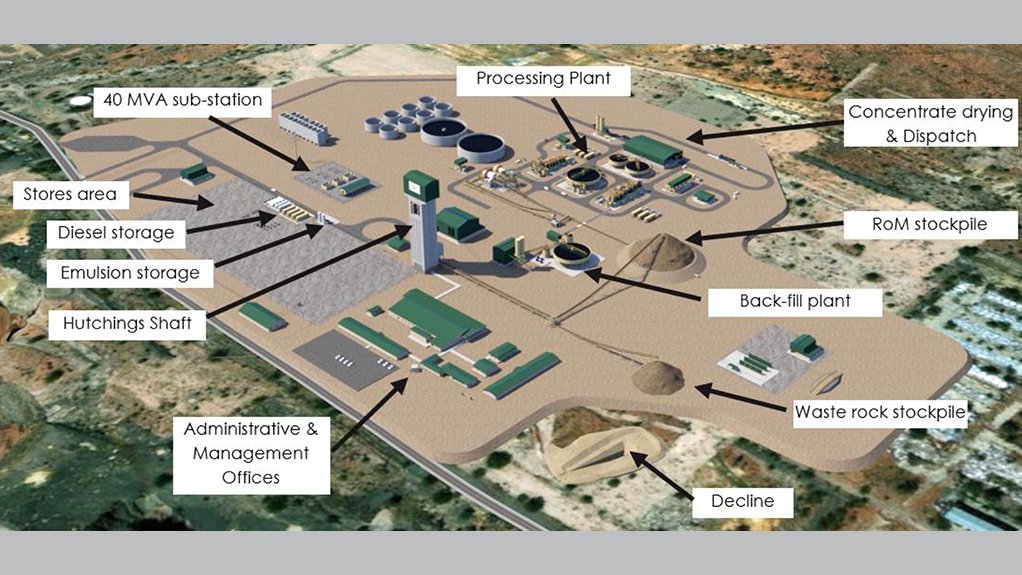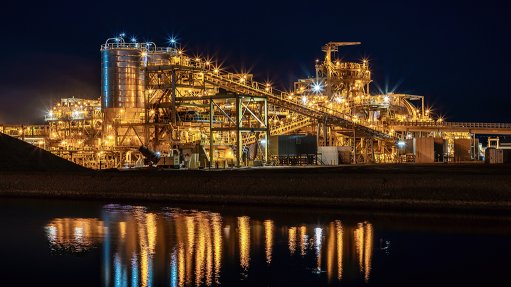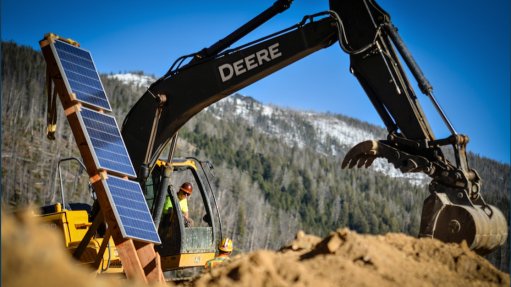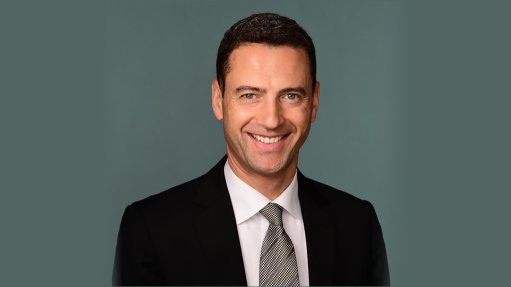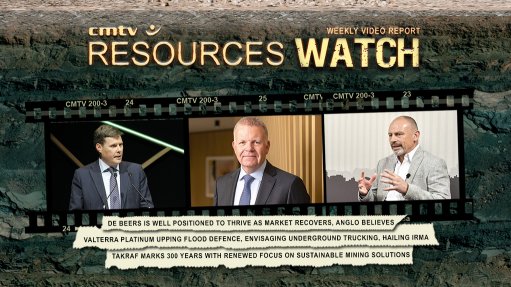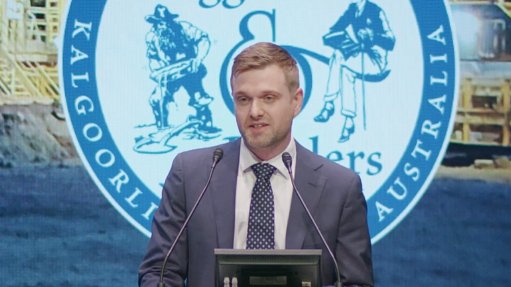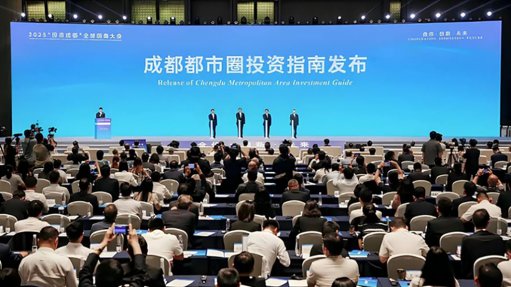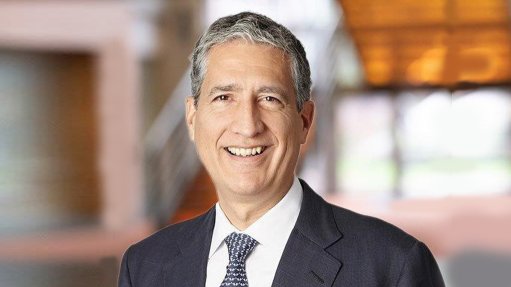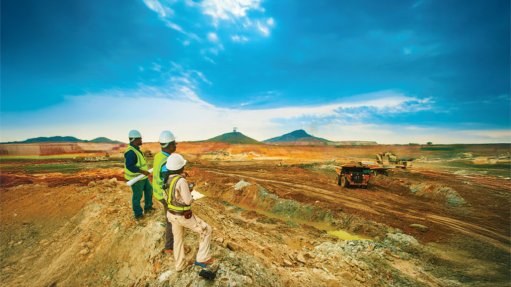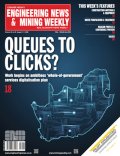Environmental, social, governance integral to Prieska copper-zinc project
JOHANNESBURG (miningweekly.com) – The Prieska copper/zinc mine being developed so spectacularly by Orion Minerals in the Northern Cape has environmental, social and governance (ESG) principles integrally built into it, Mining Weekly can today report.
The updated bankable feasibility study just released not only reduces the capital payback to a mere 2.4 years at a higher all-in-sustaining margin of 47% but also spreads ESG across the length and breadth of the entire project.
“We had to bring many extra hands on deck to help us and people said this is amazing because what you’ve actually done is you’ve integrated environmental, social and governance into the entire business.
“ESG’s not something separate. It’s something that is now an integrated part of the business. We’ll have a lot of renewable energy. We’ll have a lot of water saving. We’ll be a lower carbon operation. We’ve done all the right things working with our stakeholders and our community.
“The entire mining and management practice is completely modern, automated and Fourth Industrial Revolution enabled. From day one, everything’s going to be done the modern way, the ordered way, highly digital, highly inter-connected using the Internet of Things,” Orion Minerals CEO Errol Smart told Mining Weekly in an interview.
Orion has signed a memorandum of understanding with highly-experienced renewable energy developer juwi, and a feasibility study is complete for a combination of wind and solar power.
Prieska is located in an area that has high sun and high wind intensity: “The two counter balance each other very nicely and there’s only 30% to 40% of the 24 hours in a day that there’s neither solar nor wind sufficiency to carry the mine alone and then you need to look to batteries, hydrogen fuel cells or Eskom,” Smart said, adding that by significantly reducing dependence on Eskom’s coal-fired power the mine would be reducing water consumption.
“Fossil fuels are ultimately water consumers. It’s Eskom that’s draining the rivers of Mpumalanga. Eskom turns water into steam and the less you rely on big power stations that billow steam, the better for everyone because then there’s more water for agriculture.
“The Prieska mine has a lot of water in it. We’ve got to pump that out and then there’s always an ability to recirculate water that you are using in the mining and the metallurgical processes,” Smart said.
The Hutchings shaft and underground workings are currently filled with water to a depth of 310 m below surface and contain a volume of 8.6-million cubic metres of water. Dewatering of the workings by a pumping system to be installed in the Hutchings shaft is planned. Water will be pumped into a one-million cubic metre volume dewatering dam on surface, from where mechanical evaporators and a reverse osmosis water treatment plant will be used to treat the water for discharge into the environment.
Returning water from underground and from tailings facilities and pumping tailings back underground to use as backfill is an integral part of the planning.
“We can harvest that water, return it back to surface, partially treat it, screen it and use it again. So, we just get more water efficiency. The more the mine recirculates water on its sites, the less water it will draw from the Orange river, which is part of the ESG plan, as is making excess water available to nearby agriculture.
“We’ll be investing about R25-million to upgrade the Prieska pump station to give it more water to service the community and the mine,” said Smart.
The updated feasibility study calculates the pretax internal rate of return of the mine project at 39% on a 9% increase in peak funding requirements to A$413-million to cater for the operational improvements.
Peak annual production of 23 000 t of copper and 88 000 t of zinc in concentrates is projected.
“We’ve delivered on the promise made nine months ago, and the numbers have definitely stacked up very well for the project. The philosophy we approached this with a few years ago is now bearing fruit. We worked closely with our community and our stakeholders and the result is we’re getting support from the community and the stakeholders all the way through to the government and financial institutions that want to see investment into the Prieska region.
“All of a sudden there’s a whole new reason to invest in a mining project like this because you can either put a billion rand into buying water tanks or you can put a billion rand into building a mine that within weeks starts to create 1 200 direct jobs.
“The multiplier effect then puts an additional 3 000 people into employment and money recirculates back into the economy because materials are being bought locally for construction, the construction industry is supported, along with the transport industry and all other related industries are stimulated from it,” said Smart.
The updated bankable feasibility study highlights a 2.4-million-tonne-a-year copper and zinc mining operation at the brownfield Prieska project, with numerous improvements on the previous study completed in June 2019.
Mine construction can begin once permitting is complete and funding secured, with concentrate production scheduled to commence 33 months later.
A project execution strategy has been formulated and discussions with key service providers are well advanced.
Orion is listed on the Australian Securities Exchange and has a secondary listing on the main board of the Johannesburg Stock Exchange.
Orion currently intends to fund the development of Prieska by means of a combination of debt and equity. Equity can be raised at listed or unlisted holding company level.
“Four years from today this investment will deliver a return on foreign exchange earnings for South Africa, which the country will need.
“We’re buying money offshore and with this mine we’ll be generating earnings from offshore. We’re still looking at more than 60% being senior debt financing and another 20% on top of that subordinated and offtake-related financing.
“Only 20% of this money has to actually come from equity investors and I’m still very hopeful that the South African equity investment market is going to see the opportunity.
“This project is going to become majority South African owned. It’s taken foreign money to bring us to where we are today, but we’re listed on the JSE and the ASX and the more shares I can place in Johannesburg, the happier I’ll be,” said Smart.
Sixteen per cent of the share register is already made up of South African shareholders.
“South African shareholders are important shareholders to us but I’d be very happy to see somebody write a big cheque and move us to 50:50 even shareholder, a good position to be in.
“I’m sometimes amazed by the discourse in the public domain about people saying it’s South Africa's mineral rights why must the foreigners have it. The foreigners have invested to move it to a point. Now it needs real money.
“Every single South African has got the ability to go to their bank manager and say buy me an Orion share and become a shareholder in this.
“We’re speaking to many institutional shareholders. Everybody has been waiting for the study. It’ll take them a couple of weeks to work through it. It’s a very weighty study, as you could imagine. A lot of work has to be done and my phone hasn't stopped ringing today from all sorts of people that are interested.
“A couple of major mining houses have shown a lot of interest. Some have already been to site and on very preliminary site visits. They’re now going to get into the detail of the numbers and then it’s negotiation about how we do a deal," he said.
"Orion is currently owned by a public company with Australian and South African shares but who knows who the big shareholder will be in the future.
“As a management team, we say does it really matter who owns us? We just deliver value and that works for us and whoever comes along recognises what we’ve managed to achieve as a management team. None of us is really concerned about changes of control.
“What we want to do is just deliver value and being shareholders in the business, every one of us has actually written a cheque to buy shares in this company,” Smart said.
ALSO EXPLORING
The first holes following an airborne exploration survey, the first modern airborne survey done in the Northern Cape for 30 years, intersected ground containing ore.
“We drilled two massive sulphide discoveries. We’d like to claim that we’re genius geologists but we’re not. We just did exactly what everybody does around the world. It just hasn’t been done in the Northern Cape. The Northern Cape is so incredibly endowed and the work just hasn’t been done.
“Now we've got to work those up. When you make a discovery like that you’ve got to be prepared to spend $15-million to $20-million to drill it out and take it to a bankable study.
“We’ve demonstrated the ability to do it because it’s so highly endowed but it hasn't been explored properly.
“In five years. Prieska will be a booming mining operation. At that stage, it’ll be two years into production, turning out 22 000 t a month of copper and 70 000 t a month of zinc.
“Five years from now you’ll probably find that 60 km north of Prieska, there’s a nickel/copper/platinum deposit being developed.
“We’ve got a fantastic nickel/copper/platinum deposit there that we want to focus on next. There’ll also be a number of smaller copper/zinc deposits that may be coming into production to become satellite operations to Prieska,” Smart predicted.
Comments
Press Office
Announcements
What's On
Subscribe to improve your user experience...
Option 1 (equivalent of R125 a month):
Receive a weekly copy of Creamer Media's Engineering News & Mining Weekly magazine
(print copy for those in South Africa and e-magazine for those outside of South Africa)
Receive daily email newsletters
Access to full search results
Access archive of magazine back copies
Access to Projects in Progress
Access to ONE Research Report of your choice in PDF format
Option 2 (equivalent of R375 a month):
All benefits from Option 1
PLUS
Access to Creamer Media's Research Channel Africa for ALL Research Reports, in PDF format, on various industrial and mining sectors
including Electricity; Water; Energy Transition; Hydrogen; Roads, Rail and Ports; Coal; Gold; Platinum; Battery Metals; etc.
Already a subscriber?
Forgotten your password?
Receive weekly copy of Creamer Media's Engineering News & Mining Weekly magazine (print copy for those in South Africa and e-magazine for those outside of South Africa)
➕
Recieve daily email newsletters
➕
Access to full search results
➕
Access archive of magazine back copies
➕
Access to Projects in Progress
➕
Access to ONE Research Report of your choice in PDF format
RESEARCH CHANNEL AFRICA
R4500 (equivalent of R375 a month)
SUBSCRIBEAll benefits from Option 1
➕
Access to Creamer Media's Research Channel Africa for ALL Research Reports on various industrial and mining sectors, in PDF format, including on:
Electricity
➕
Water
➕
Energy Transition
➕
Hydrogen
➕
Roads, Rail and Ports
➕
Coal
➕
Gold
➕
Platinum
➕
Battery Metals
➕
etc.
Receive all benefits from Option 1 or Option 2 delivered to numerous people at your company
➕
Multiple User names and Passwords for simultaneous log-ins
➕
Intranet integration access to all in your organisation



